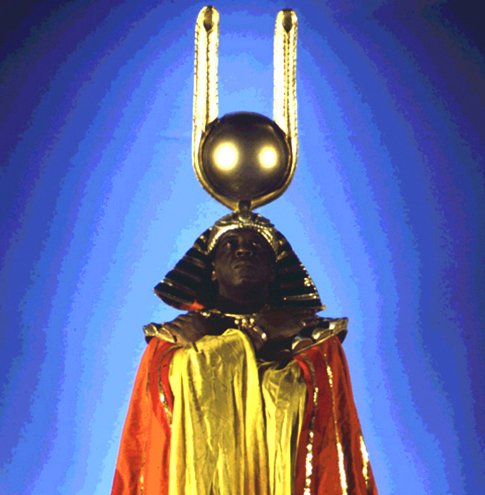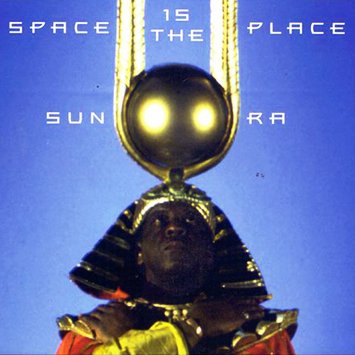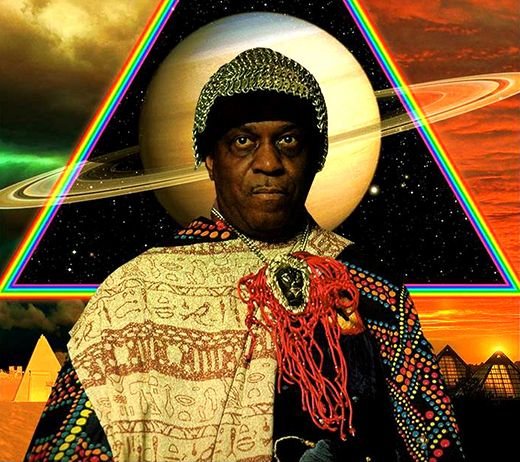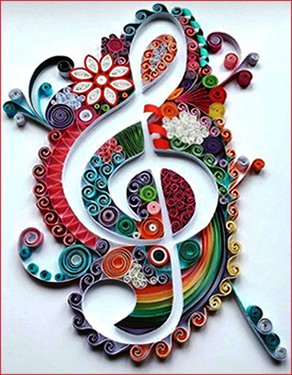Jazz avant-garde: «Of Heavenly Things» y «Nebulae» [ESP/ENG]
Of Heavenly Things
Danny Davis (saxo alto, flauta), Marshall Allen (saxo alto, flautín, campanas, platillos en forma espiral), John Gilmore (saxo tenor, timbales), Pat Patrick (saxo baríton, timbales), Chris Capers (trompeta), Teddy Nance (trombón), Bernard Pettaway (trombón bajo), Robert Cummings (clarinete bajo, caja china), Sun Ra (piano, marimba, celeste eléctrico, timbales), Ronnie Boykins (contrabajo) y Jimhmi Johnson (batería, percusión, timbales). Extraído del álbum The Heliocentric Worlds of Sun Ra, Volume One (1965).
En 1971, 1983 y 1984 la Sun Ra Arkestra viajó a Egipto. En sus conciertos se combinaban cantos místicos e improvisaciones libres con versiones extravagantes de melodías swing. En 1972 Ra grabó el álbum Space is the Place, y los productores John Coney y Jim Newman, junto con el guionista Joshua Smith, trabajaron con Sun Ra para crear un largometraje de 85 minutos de duración con el mismo título que el álbum. En 1978, Sun Ra junto con su banda aparecieron en el programa de televisión Saturday Night Live. El grupo ha continuado sus giras y grabaciones hasta la actualidad. En 1990, Sun Ra sufrió un derrame cerebral, pero continuó dirigiendo su grupo y componiendo música. Murió en 1993 a la edad de 80 años de insuficiencia cardíaca congestiva y respiratoria, derrames cerebrales, problemas circulatorios y otras enfermedades. A partir de entonces el saxofonista tenor John Gilmore, cuya relación con Sun Ra duró cuarenta años, dirigió la Sun Ra Arkestra hasta su propia muerte en 1995, cuando fue reemplazado por el saxofonista alto Marshall Allen, que pertenece a la banda desde 1958.
In 1971, 1983 and 1984 the Sun Ra Arkestra traveled to Egypt. In their concerts they combined mystical songs and free improvisations with extravagant versions of swing melodies. In 1972 Ra recorded Space is the Place and producers John Coney and Jim Newman, along with screenwriter Joshua Smith, worked with Sun Ra to create an 85-minute feature film with the same title as the album. In 1978, Sun Ra and his band appeared on the television show Saturday Night Live. The group has continued its tours and recordings to the present day. In 1990, Sun Ra suffered a stroke, but continued to lead his group and composing music. He died in 1993 at the age of 80 years from congestive heart and respiratory failure, circulatory problems, stroke and other diseases. From then on tenor saxofonist John Gilmore, whose relationship with Sun Ra lasted forty years, directed the Sun Ra Arkestra until his own death in 1995, when he was replaced by alto saxofonist Marshall Allen, that belongs to the band since 1958.


Sun Ra creía que había que despertar a la humanidad. Quería liberarse de las viejas ideas y costumbres. De niño empleaba su tiempo en tocar el piano y componer, y le encantaban los libros. Leyó los antiguos textos egipcios y griegos, los trabajos de P. D. Ouspensky, Booker T. Washington, Helena Blavatsky, James Joyce y Rudolf Steiner. Leyó sobre la historia de los negros afroamericanos y estudió los orígenes del lenguaje, la Biblia, la Kábala y los principios Rosacruces. Sun Ra eliminó de su vida el sueño, las drogas y las mujeres, pues no quería perder ni un solo momento de su tiempo. Hizo votos para vivir cada instante con anticipación y lo hizo a través del jazz. En el jazz la unidad puede existir, pues requiere disciplina, precisión y una mente clara. El jazz era el camino hacia una experiencia mística. Sun Ra afirmaba que los negros afroamericanos pertenecían a una sociedad secreta, con su propio lenguaje y sus propios códigos y manifestaciones culturales que solo ellos podían entender. También aseguró que había sido enviado a la Tierra desde el cosmos para salvar a la humanidad y traer armonía al mundo. En las actuaciones de la Sun Ra Arkestra se podía encontrar música, teatro, danza y proyección de diapositivas, y los músicos iban disfrazados de egipcios, africanos, seres espaciales y carnaval. Además, vivían, trabajaban y pensaban juntos. El grupo respiraba la música y se abandonaba a ella como un solo organismo iluminado cuyo guía era Sun Ra.
Sun Ra believed that humanity had to be awakened. He wanted to free himself from the old ideas and customs. As a child he spent his time playing the piano and composing, and he loved books. He read the ancient Egyptian and Greek texts, the works of P. Ouspensky, Booker T. Washington, Helena Blavatsky, James Joyce and Rudolf Steiner. He also read about the history of blacks African Americans and studied the origins of language, the Bible, the Kabbalah and the Rosicrucian principles. Sun Ra eliminated sleep, drugs and women from his life because he didn’t want to waste even a single moment of his time. He vowed to live every instant with anticipation and he did it through jazz. In jazz, unity can exist because it requires discipline, precision and a clear mind. Jazz was the path to mystical experience. Sun Ra claimed that blacks African American belonged to a secret society with their own language, music, codes and cultural manifestations that only they could understand. He also declared that he had been sent to Earth from the cosmos to save humanity and bring harmony to the world. In the Sun Ra Arkestra performances you could find music, dance, theater and slide shows, and the musicians were disguised as Egyptians, Africans, space beings and carnival. In addition, they lived, worked and thought together. The group breathed the music and abandoned itself to it as one enlightened organism whose guide was Sun Ra.

Primero suenan unos cascabeles y luego Ra con la marimba, Patrick con el timpani y Boykins con el arco estableciendo una conversación. Después aparece brevemente el grupo entero para dar paso a Davis, que toca algunas frases con la flauta acompañado por Ra. A continuación Ra hace un duo con Boykins, esta vez tocando el contrabajo con pizzicato, y posteriormente se incorpora otra vez Patrick. Luego Boykins sigue su discurso acompañado de Johnson, que toca suavemente los platillos. Después entra Davis con la flauta haciendo un solo efusivo y le acompañan algunos músicos de la banda. Luego Cummings toca un woodblock y después Ra vuelve de nuevo al que se le une Boykins marcando las pautas de la melodía con Johnson tocando la batería. A continuación interviene brevemente la sección de viento y Ra continúa con la marimba acompañado de Davis, que luego se queda solo con la flauta, y finalmente Boykins y Johnson le dan en toque final a la composición.
First some rattles sound and then Ra with the marimba, Patrick with the timpani and Boykins with the bow establish a conversation. After that, the group appears briefly to give way to Davis, who plays some phrases with the flute accompanied by Ra. Then Ra makes a duo with Boykins, this time playing the double bass with pizzicato, and later Patrick joins in again. Next Boykins continues his discourse accompanied by Johnson, who plays the cymbals gently. They are followed by Davis with the flute making an effusive solo accompanied by some musicians of the band. Afterwards, Cummings plays a woodblock and then Ra returns again with Boykins joining him and setting the tone of the melody while Johnson plays the drums. Then the wind section intervenes shortly and Ra continues with the marimba along with Davis, who then stays alone with the flute, and finally Boykins and Johnson give the final twist to the composition.

Translated with the help of DeepL

Nebulae
Sun Ra (piano, marimba, celeste eléctrico). Extraído del álbum The Heliocentric Worlds of Sun Ra, Volume One (1965).
En esta pieza musical, el único que interviene es Ra tocando sus instrumentos. Comienza con el electric celeste ofreciendo un discurso intrépido y estimulante que luego va suavizando. Después toca brevemente la marimba y pasa inmediatamente al piano con un solo muy lento en el que introduce frases más rápidas de vez en cuando.
In this musical piece, the only one who intervenes is Ra playing his instruments. He start with the electric celeste offering an intrepid and stimulating speech that he then softens. Then he briefly plays the marimba and at once moves onto the piano with a very slow solo in which he introduces faster phrases in between.

0
0
0.000


¡Enhorabuena!
✅ Has hecho un buen trabajo, por lo cual tu publicación ha sido valorada y ha recibido el apoyo de parte de CHESS BROTHERS ♔ 💪
♟ Te invitamos a usar nuestra etiqueta #chessbrothers y a que aprendas más sobre nosotros.
♟♟ También puedes contactarnos en nuestro servidor de Discord y promocionar allí tus publicaciones.
♟♟♟ Considera unirte a nuestro trail de curación para que trabajemos en equipo y recibas recompensas automáticamente.
♞♟ Echa un vistazo a nuestra cuenta @chessbrotherspro para que te informes sobre el proceso de curación llevado a diario por nuestro equipo.
🏅 Si quieres obtener ganancias con tu delegacion de HP y apoyar a nuestro proyecto, te invitamos a unirte al plan Master Investor. Aquí puedes aprender cómo hacerlo.
Cordialmente
El equipo de CHESS BROTHERS